As an Amazon Associate I earn from qualifying purchases.
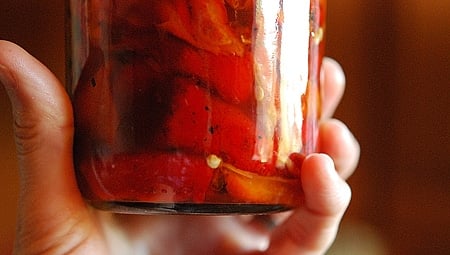
Consider, for a moment, the sweet pepper. No other plant demands so much, gives so little, yet keeps us coming back for more.
Sweet peppers are the coquettes of my garden. I coddle them, dote on their every need, and in return they toss me a few fruits to play with — so few, in fact, that I can barely bring myself to eat them fresh. I preserve almost every one the little minxes give me to eat huddled, alone, in the dead of winter. Or something like that.
Every year I say, “I need to plant more sweet peppers.” Every year I plant a few more. It’s never enough. I could lay waste to everything else in my garden and plant only an array of red bells, piquillos, padrons, pimientos and sweet cherry bombs — and still it would not be enough. It is not possible to have too many sweet peppers; chiles yes, but not sweet peppers.
What’s more, after these princesses deign to drop me a pepper or three, it has become so late in the season that they die soon afterward, our relationship barely consummated. It reminds me of some character in an Edith Wharton novel (and yes, I’ve read several. Blame my mother for that one…)
Disconsolate, I used to count the days until February, when I could start a new set of seeds under hot lights inside; even in birth, sweet peppers need to be the center of attention.
But then, one day, I found a way to cheat death.Yes, it is as simple as a heavy pot, a warm climate, and a quirk of biology.
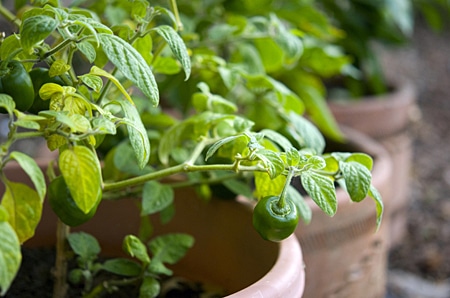
I live in Northern California, and in my little spot of land, we get a hard frost only once every few years. Light frosts, which are enough to kill a pepper, come no more than a couple dozen times a year in my garden. But in the front of my house, which faces south, those light frosts come less than a dozen times a year, and even in the dead of winter the highs soar past 50 degrees — warm enough to keep a pepper alive.
But aren’t peppers annuals? No. And that is a dirty secret perpetrated by seed dealers everywhere. The coquettes aren’t eager to die after all, it seems. Only cold kills them. What they want is an even deeper commitment from you the gardener before they willingly give up their fruit. I once had a Thai chile — a capiscum frutescens, for you pepper freaks out there — that lived five years. My rocoto peppers are two years old and going strong. Peppers, like most of us, want a long-term relationship.
So I dig up my peppers from the garden every October, pot them up and move them to the front yard, which is such a blast furnace in summer — routinely reaching 110 degrees — that it would burn most peppers; that’s why I don’t keep them in the front all year long.It works for me. And it would work for anyone who has a sunny window. My Thai chile lasted in Minnesota until one day even the inner windowsill dropped below 30 degrees. (Outside it was -19 degrees, -30 with the wind.) So it can be done.
Once spring returns, you will find your peppers strong and ready to flower early and grow large. And mature peppers bear more fruit.
What to do with that fruit? Well, I’d venture to guess that everyone reading this has a favorite pepper recipe. I have lots on this site. But I also preserve a lot of peppers, less out of fear now than because preserved peppers take on a character totally unlike fresh ones.
My main method is to roast the peppers over an open fire, then preserve them with a little salt, vinegar and oil. Peppers lack natural acid, so need to be pressure-canned if you aren’t using vinegar or salt. I don’t do much pressure-canning, so I use a hybrid pickle method that works well for me.

This way of preserving does a number of things. Roasting kills any enzymes in the peppers that might deteriorate them over time, as well as softening and sweetening the peppers — not to mention getting rid of the indigestible skins. I then dredge the peppers in vinegar to up the acid level and give the peppers more tang. After that I salt them liberally to make things even more stable; salt also adds to the flavor. And finally I cover everything in olive oil to keep air out. Some tips:
- Dry the peppers after washing them, and oil them lightly before grilling or roasting under the broiler.
- Grill them hard, as in blackened. Very few peppers have the thick skin a pimiento does (pimientos are bred to be roasted and peeled, so they have unusually thick skins), and a thin skin can be a bear to peel off unless it is good and charred.
- Steam the roasted peppers for a long time, in a paper bag. Don’t use plastic, as it will often melt. And you can wait on this step for up to an hour or so. Nothing quite so fun as to be scalded with nuclear-hot pepper juice when you’re trying to peel them.
- Don’t wash the peppers once peeled. You want all that pepper juice you can collect, and running the peppers under water will rob you of that. This is the secret to really, really good roasted peppers.
Another preserved pepper preparation (say that one five times fast!) I often do is make sauces. One of my favorites is a variant on a Hungarian sauce I once bought solely for the color: shocking, neon red. A classic “shiny things!” moment. Basically this sauce is made from roasted gypsy peppers, which are both hot and sweet at the same time, pureed with white wine vinegar, salt and a little olive oil.
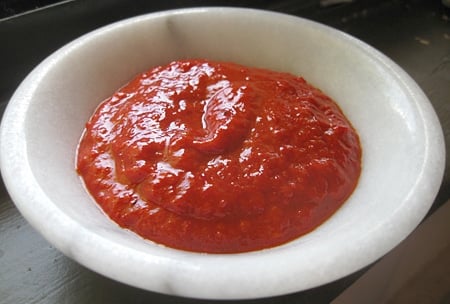
Again, the vinegar, salt and oil are what preserves this sauce, which I have kept in the fridge for a year. The only pain is peeling gypsy peppers, which are both thin-skinned and thin-walled, unlike the thick-walled bell peppers we’re used to. A small price to pay.
I use this coulis, which is what the French would call it, as an ingredient in other sauces — particularly a Spanish, pepper-based dish called chilindron — as well as with fish or pheasant. You could use chicken. I find it marries better with light meats, not red meat like venison or beef.
For most of you it is not too late to rescue your peppers. Those of you in colder climates may be forced to choose which pepper’s charms most attract you, as you may not have space to save everyone. And don’t be worried about the pepper dropping leaves in winter; it happens. Just keep it in a sunny spot, protect it from whiteflies, and keep it as warm as you can. It will repay you for your kindnesses next year.
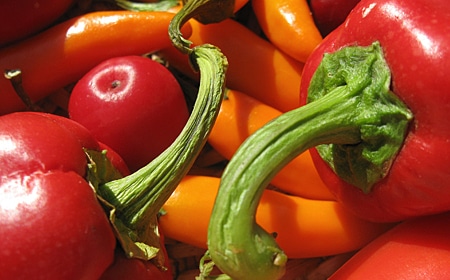
_________________
[recipe_name]PRESERVED ROASTED RED PEPPERS[/recipe_name]
[summary]There are a lot of ways to preserve red peppers. You can pickle them, which is nice, but a little limiting; pickled sweet peppers are good for an appetizer, but little else. Once you roast the peppers, however, things change.
Roasted peppers are a delight. I use them as appetizers like the pickled peppers, but also in sauces, stews and simply draped over roasted or grilled meat. Roasting — especially over an open flame — sweetens and softens the pepper, and more importantly, allows you to be rid of the indigestible skin.
Yes, you can pickle the roasted red peppers, too, but I’ve developed a method inspired by an obscure English book by Nora Carey called Perfect Preserves. Carey uses a hybrid pickling, sott’olio method to keep her peppers delicious through her British winters. I’ve adapted it a little to reflect the hotter California climate.[/summary]
[yield]Makes about 2 pints.[/yield]
Prep Time:[preptime time=35M] 35 minutes[/preptime]
Cook Time:[cooktime time=45M] 45 minutes[/cooktime]
- [ingredient] [amount]8[/amount] [item]red peppers[/item], or really any colored peppers [/ingredient]
- [ingredient] [amount]2 tablespoons[/amount] [item]olive oil[/item] [/ingredient]
- [ingredient] [amount]1 cup[/amount] [item]vinegar[/item] (any kind) [/ingredient]
- Kosher salt
- Canning jars
- A chopstick or butter knife
[instructions]
- First wash, dry and then lightly oil your sweet peppers. You can do this with hot peppers, too, but be sure to use thick-walled varieties such as jalapenos.
- Roast your peppers. Ideally this is over a smoky wood fire, on a grill. Second choice is a gas grill, third an open burner on a stove. Alternatively, arrange your peppers on a broiling pan and broil them. No matter what your heating method, you will need to turn your peppers from time to time as the skins char and blacken.
- When the peppers are mostly blackened, remove them to a paper grocery bag and roll up the bag to seal in the steam. You want to steam the peppers in their own juices. Let the bag sit for 20-40 minutes.
- After the peppers have cooled and steamed, take them out one at a time and remove the skins, stems and seeds. Have a little water running in the sink so you can wash your hands off periodically. Do NOT run the peppers under the water, as this robs them of flavor. Once each pepper is cleaned — get as many seeds out as you can — drop it in a bowl. Do all the peppers before proceeding.
- Once all the peppers are cleaned and in the bowl, get a shallow bowl or small casserole pan and pour in some vinegar. I use red wine, cider or sherry vinegar for red peppers (sherry when I want them to be Spanish, cider for Portuguese, red wine for Italian or Greek) and white wine for green peppers.
- Dredge each pepper through the vinegar a few times to get it good and coated. Place it in another bowl. Do this for all the peppers.
- Sprinkle the bowl with all the peppers with kosher salt. Gently mix the peppers together like a salad. Sprinkle a little more salt and repeat. Sprinkle a little salt into the bowl with the pepper juice — the original bowl.
- Gather canning jars and pour a little vinegar into each one; enough to cover the bottom of the jar. Pack in the peppers, leaving about 1/2 space at the top. Use a butter knife or chopstick to run down the sides of the jars, releasing air bubbles. You will notice the level of liquid drop. Fill it with the salted pepper juice — but still leave room at the top of the jar.
- Once the air is out to the best of your ability and the vinegar-pepper juice it right at the top of the level of the peppers, pour in olive oil on top of everything to a depth of 1/4 inch. Screw the lids on the jars and you’re done. No sealing needed. These peppers will last a year in the refrigerator, although they will soften over time.
[/instructions]
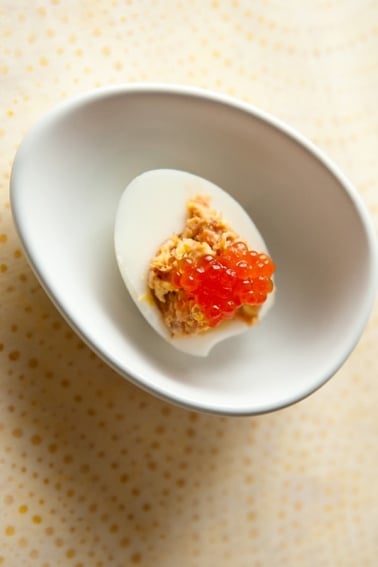
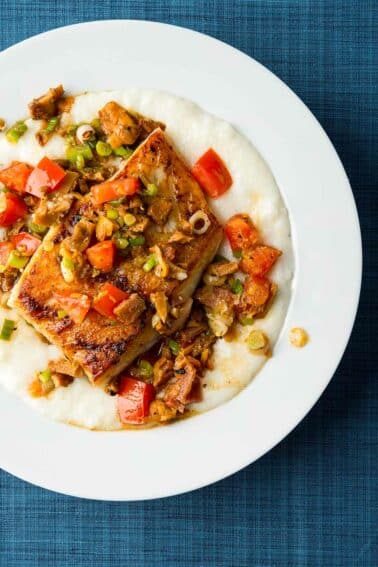
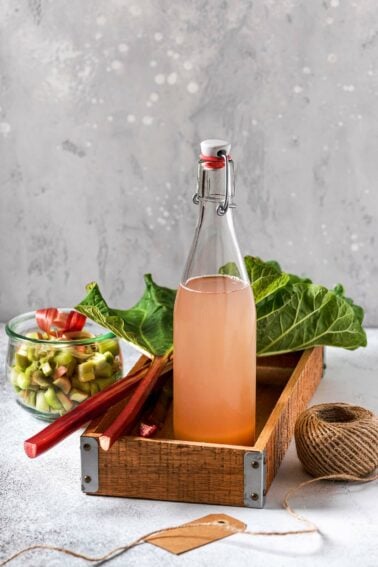
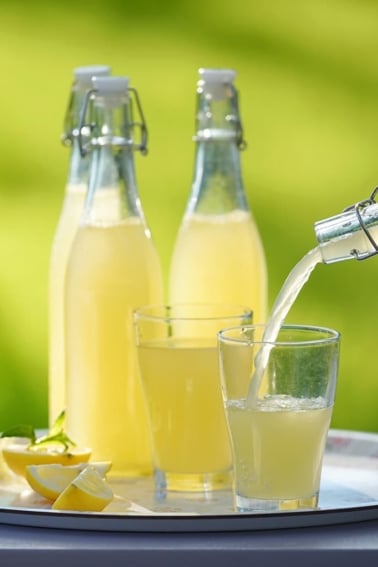
Can you also add the juice from the capsicium as well as vinegar and oil?
I do.
YUM! I was looking for a recipe to replace one I made with sugar. I need it to preserve so I can give it as a gift when we have bulk peppers (capsicums – Australia). Ive also given up added sugars from my diet so this will prob do the trick ! Thanks 🙂
I love your descriptions of growing peppers and can relate to it.
I also would like to know how to ‘can the peppers’, or as we might say in Australia, ‘bottle the capsicums’!
I tried moving one of my sad capsicum/pepper plants once into a pot, a little too late going into winter, but it still picked up and tried to keep going. I have grown them inside in the past but now have no room. Our summers are often too cool and short, and winters are often frosty, cold, wet… However, i understand that need to grow them every year in spite of the fact that i have had no success the past 2-3 years and certainly none with eggplants which run parallel in the must-haves department, along with tomatoes, which i have limited success with.
Spring has sprung on our southern island and i am furiously planting so i am certainly going to give the mass digging and potting of capsicum/pepers and eggplants a go this year. Thanks for the reciies too.
These sound delicious but do you have a recipe for canning these instead of having to refrigerate?
If one was so inclined, could these be canned and processed for pantry storage? My fridge tends to have a lack of space….. I wasn’t sure if it needed to be pressure canned or if the acidity and salt levels would be okay. Also didn’t want to affect the condition and taste of the peppers in the jar.
Thanks, Hank
Came across your post while searching for ways to use an abundance of peppers. Then I saw that you grow Pimientos de Padron and had to ask: what do you do with the one that get too large to pick for the famous tapas-version (the small peppers fried and sprinkled with coarse salt)? Last year I pickled them like I would jalapeños but their thin flesh caused them to get a little too soft.
This year I want to make a marinade that I can preserve and open up throughout the year. Maybe you have an idea for me? Or maybe we can collaborate on one! I have a greenhouse and my peppers grow like weeds… I have jalapeños, poblanos, and sweet red Greek peppers, too.
Thanks much!
Cara
Just stumbled upon your blog post about preserving peppers-fantastic. I’m still awaiting my first courting and relationship with a sweet pepper plant 🙂
This looks very interesting. My husband likes peppers and onions. Have you tried adding onions to the same vinegar/salt process? Not sure how they would hold up in the “brine” over time . . . Thanks for the inspiration!
what is the best way to freeze them ?
Thanks !
Love preserved peppers. I’m enjoying Portuguese picked sweet peppers in oil with some added basil and lightly toasted bread as I type this…wonderful.
found this post about a month ago when i had an extra big bag of sweet peppers that were on sale from the store and i knew i would never get through them all before they started going bad. i followed your recipe, not very carefully because i had a lot of distractions. i put them under the broiler to blacken and forgot about them and parts of them were too charred. i salvaged what i could and used apple cider vinegar, poured olive oil over them. pushed them to the back of the fridge. i wasn’t thrilled because i messed up and they didn’t look as nice as yours by a long shot. forgot about them until today when i was scrounging up a lunch for myself and my two and a half year old. decided to give them a try and, oh boy! salty, vinegarry, savory! sliced a few pieces of sourdough bread, added a few preserved peppers on top, a big basil leaf and some mozzarella under the broiler. i will make this recipe with every pepper i can get my hands on from now on. my daughter loved it too. my infant son was even smacking his lips from afar. too bad for him he isn’t onto solid foods yet!
I have six plants full of big, plump, red peppers. Can I roast them in the oven at high temperature and then follow the recipie?
Jon: Weirdly, I am making it right now!
Hank, have you ever tried to make your own vinegar? I’ve had a batch of red wine going for a couple years now. I bought a mother from a canning place on line and I add my own red wine… it makes for a deeper flavor vinegar that may compliment this dish quite well. Anyway, just a thought!